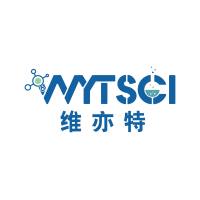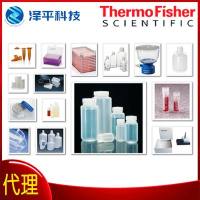Chromatin immunoprecipitation protocol for Saccharomyces cerevisiae
互联网
Introduction
ChIP (chromatin immunoprecipitation) is a powerful tool that allows one to determine whether and where a protein or protein modification is associated with chromatin in vivo . The technique starts with a formaldehyde treatment of cells to crosslink protein-protein and protein-DNA complexes. After cross-linking, the cells are lysed and crude extracts are sonicated to shear the DNA. Proteins together with crosslinked DNA are immunoprecipitated. Protein-DNA crosslinks in the immunoprecipitate and input (non-immunoprecipitated whole cell extract) are then reversed and the DNA fragments are purified. Real-time quantitative PCR can then be used to amplify the region where either a protein or protein modification is present. DNA fragments of this genomic locus should be enriched in the immunoprecipitate compared to that in the input (which represents all portions of the genome). This protocol has been successfully used in the Gasser lab to study proteins at replication forks and chromosomal DNA double-strand breaks (DSBs) in budding yeast (Saccharomyces cerevisiae ) (Cobb et al., 2003; van Attikum et al., 2004).
Back to top
Procedure
Preculture of yeast cells for ChIP of proteins at DSBs
We have used strains with JKM179 background (Lee et al., 1998) to study binding of proteins at DSBs. This strain expresses the HO endonuclease from a galactose-inducible promoter (HO is repressed when glucose is present in the medium). HO induces a unique DSB at the MAT locus. This break is usually repaired by recombination. However, in this strain the donor loci for repair were deleted in order to prevent repair by recombination. This allows us to monitor protein binding at the HO-induced DSB. (comment 1)
- Inoculate YPAD medium with strain JKM179 or one of its derivatives
- Incubate and rotate at 180-210 rpm overnight at 30°C
- Dilute the overnight culture in YPLGg medium (volume should be consistent with number of timepoints, use 100ml/timepoint)
- Incubate and rotate at 180-210 rpm overnight at 30°C until OD600 = ~0.3-0.4
- Pour 100ml culture into a new flask and add glucose to a final concentration of 2%
- Add galactose (Fluka) to a final concentration of 2% to the rest of the overnight culture
- Incubate and rotate at 180-210 rpm at 30°C
- At each desired timepoint take 100 ml culture and pour it into a new flask for formaldehyde cross-linking (usually samples are taken at 0.5, 1, 2 and 4 hours for cells grown in galactose and at 2 hours for cells grown on glucose)
Preculture of yeast cells for ChIP of proteins at replication forks
- Inoculate YPAD medium with strain of interest
- Incubate and rotate at 180-210 rpm overnight at 30°C
- Dilute the overnight culture to 1 x 106 cells/ml in YPAD medium (volume should be consistent with number of timepoints, use 50ml/timepoint)
- Incubate and rotate at 180-210 rpm at 30°C until 5 x 106 cells/ml
- Spin down the cells at 3000 rpm (1620 g ) at room temperature for 3 minutes
- Remove supernatant and resuspend cells in YPAD pH5
- Spin down the cells at 3000 rpm (1620 g ) at room temperature for 3 minutes
- Remove supernatant and resuspend cells in YPAD pH5
- Add alpha-factor (note 1) and incubate and rotate at 180-210 rpm at 30°C for 1.5 h to arrest cells in G1
- Spin down the cells at 3000 rpm (1620 g ) at room temperature for 3 minutes
- Remove supernatant and resuspend cells in YPAD
- Spin down the cells at 3000 rpm (or 1620 g ) at room temperature for 3 minutes
- Remove supernatant and resuspend cells in YPAD without or with 200 mM hydroxyurea
- Incubate and rotate at 180-210 rpm, at 16°C when cultures do not contain hydroxyurea, and at 30°C when cultures contain hydroxyurea.
- At each desired timepoint take 50 ml culture and pour it into a new flask for formaldehyde cross-linking (samples are taken at 0 (cells in G1), 10, 20, 40 and 60 minutes after release into S-phase)
Day 1
Formaldehyde cross-linking
- Add 1.5 ml 36% formaldehyde to 50 ml of yeast cell culture (1% final)
- Shake slowly at 100 rpm at 30°C for 15 minutes
- Add 2.5 ml 2.5 M glycine
- Shake slowly at 100 rpm at 30°C for 5 minutes
- Spin down the cells at room temperature at 3000 rpm (1620 g ) for 3 minutes
- Remove supernatant and wash cells with 25 ml 1x PBS
- Spin down the cells at room temperature at 3000 rpm (1620 g ) for 3 minutes
- Remove supernatant and resuspend cells in 1 ml 1x PBS
- Transfer cells to a 2 ml tube with screw cap
- Spin down cells at room temperature at 10000 rpm (9500 g ) for 2 minutes and remove supernatant
- Freeze pellet at �80°C.
Day 2
Preparation of beads covered with antibodies
- Spin down 2 x 40 µl (80 µl) dynabeads (note 2) per sample, place tube in magnetic stand and remove supernatant
- Wash dynabeads with 0.5 ml 1x PBS-BSA (5mg/ml) by constant rotation for 30 minutes at 4°C
- Spin down dynabeads, place tube in magnetic stand and remove supernatant
- Respend dynabeads in 0.5 ml 1x PBS-BSA (5mg/ml)
- Add ~5 µg antibody to 40 µl dynabeads, do not add antibody to the other 40 µl dynabeads
- Rotate for 2 hours at 4°C
- Spin down dynabeads, place tube in magnetic stand and remove supernatant
- Wash dynabeads with wash buffer by rotation for 5 minutes at 4°C
- Repeat the last two steps
- Resuspend each portion of dynabeads in 40 µl 1x PBS-BSA (5mg/ml)
Cell extracts (WCE)
- Add ~400 µl Zirconia/Silica (Biospec Products, Inc.) beads to the cell pellet
- Add 600 µl lysis buffer
- Beadbeat 3 x 1 minute (with 1 minute time intervals) at maximum at 4°C (Mini beadbeater-8, Biospec Products, Inc.)
- Make a hole in the bottom of the tube using a needle
- Place the tube in a 3ml polypropylene tube (12x55 mm, Semadin) and put these in a 12 ml falcon tube
- Centrifuge at 2000 rpm (380 g ) at 4°C for 5 minutes to recover the extract
- Add 600 µl lysis buffer to recoverd extract and resuspend the pellet
- Sonicate 4 x 20 seconds. : 1 x on 2.5, 2x on 3.5 and 1 x micro, 20 seconds each (Sonic Dismembrator 550, Fischer Scientific)
- Transfer the extract to a pre-chilled eppendorf tube
- Centrigue at 7000 rpm (4650 g ) at 4°C for 2 minutes
- Transfer supernatant to new pre-chilled eppendorf tube
- Save 25 µl aliquot (INput) in 2 ml safe capslock eppendorf tubes (in view of phenol extraction), freeze at �20°C till crosslinking reversal step (note 3)
Immunoprecipitation
- Divide the cell extract over two eppendorf tubes
- Add 40 µl dynabeads with antibody to one halve of the extracts
- Add 40 µl dynabeads without antibody to the other halve of the extracts
- Rotate for 2 hours at 4°C
- Spin down dynabeads, place tube in magnetic stand, remove supernatant, resuspend dynabeads in 600 µl lysis buffer
- Mix beads for 5 minutes at 4°C
- Repeat the last two steps
- Spin down dynabeads, place tube in magnetic stand, remove supernatant, resuspend dynabeads in 600 µl wash buffer
- Mix dynabeads for 5 minutes at 4°C
- Spin down dynabeads, place tube in magnetic stand, remove supernatant, resuspend dynabeads in 600 µl TE buffer
- Mix dynabeads for 1 minute at 4°C
- Spin down dynabeads, place tube in magnetic stand, remove supernatant
- Resuspend dynabeads in 120 µl TE/1%SDS buffer
- Mix dynabeads for 10 minutes at 65°C
- Centrifuge 5 seconds at 13.000 rpm and place tube in magnetic stand
- Transfer supernatant to 2 ml safe capslock eppendorf tubes (note 3)
- Add 130 µl and 100 µl TE/1%SDS buffer to IP and IN samples, respectively
- Submerge the tubes in water and incubate overnight at 65°C
[1] [2] 下一页







